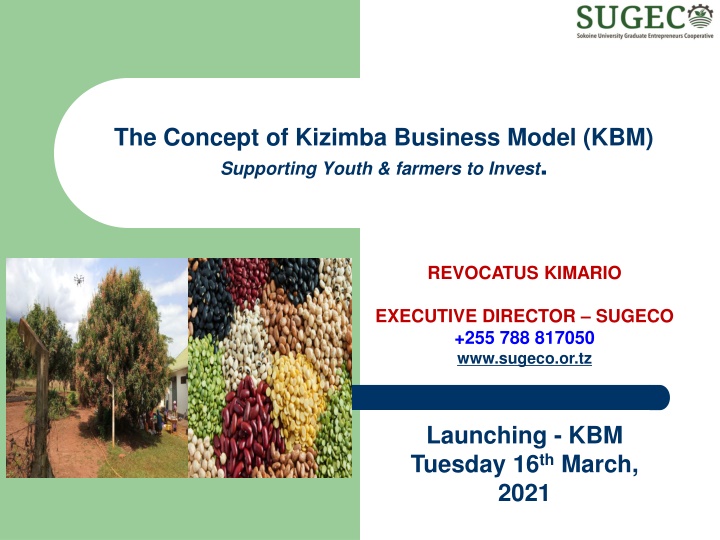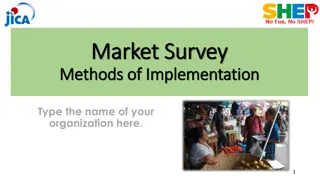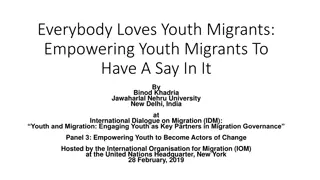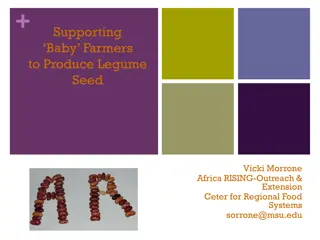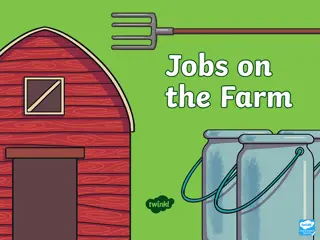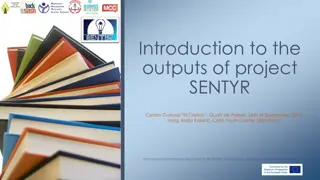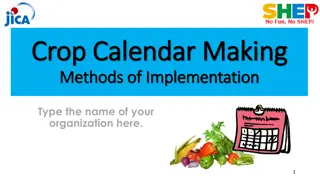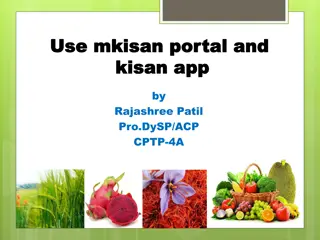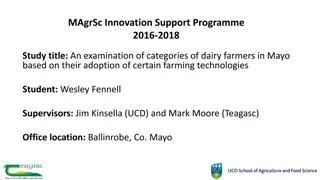Empowering Youth and Farmers through Kizimba Business Model (KBM)
SUGECO, a cooperative in Tanzania, is launching the Kizimba Business Model (KBM) to support youth and farmers in agricultural investment. KBM focuses on addressing challenges like underinvestment, market failures, and climate change through innovative real estate approaches. By promoting block farming and creating infrastructure units known as KIZIMBAs, KBM aims to boost agribusiness development and ensure sustainable livelihoods. Join the movement towards self-employment, job creation, and agricultural empowerment.
Download Presentation

Please find below an Image/Link to download the presentation.
The content on the website is provided AS IS for your information and personal use only. It may not be sold, licensed, or shared on other websites without obtaining consent from the author.If you encounter any issues during the download, it is possible that the publisher has removed the file from their server.
You are allowed to download the files provided on this website for personal or commercial use, subject to the condition that they are used lawfully. All files are the property of their respective owners.
The content on the website is provided AS IS for your information and personal use only. It may not be sold, licensed, or shared on other websites without obtaining consent from the author.
E N D
Presentation Transcript
The Concept of Kizimba Business Model (KBM) Supporting Youth & farmers to Invest. REVOCATUS KIMARIO EXECUTIVE DIRECTOR SUGECO +255 788 817050 www.sugeco.or.tz Launching - KBM Tuesday 16th March, 2021
Presentation Outline o SUGECO IN NUTSHEL o Agricultural Development Challenges o The Concept of Kizimba Business Model (KBM) and Its Genesis o The Ecosystem of KBM o Specific Value chains (Status & Anticipated Issues) o Mango & Beans Business Opportunities o Preferred Varieties? o Opportunities through KBM o The Way Forward
Facts About SUGECO A cooperative founded in 2011 with 40 founder members, now grown up to over 1,000 members of which 750 are active members Registered under Tanzania Cooperative Act No. 20 of 2003, with Reg. No. MG.620 Work to promote youth/farmers involvement in agriculture as business for self employment, job creation and livelihood diversification Support and develop competitive agribusiness SMEs. Closing the Missing (hidden) middle gaps
Agricultural Development Challenges Underinvestment in extension and infrastructure Volatile output price Difficulty in accessing input credit and crop insurance Essential infrastructure is either poor in quality and reliability or lacking altogether Climate change and environmental degradation concentrated in the production of low value raw agricultural commodities Systemic Market failure
Kizimba Business Model (KBM) Kizimba Business model (KBM) is a real estate business approach in agriculture and agribusiness development. Originates from LGA s Business Infrastructure & facilities development The facilities are developed with necessary infrastructure divided into units called KIZIMBA!! Adopt the same to establish Block farming for specific value chains Innovative models to address market failures and small farmer constraints How it Works It follows systematic Model Approach Build, Lease and Transfer (BLT), or Build, Operate and Transfer (BOT) or Build and Transfer (BT) system design KBM model can be adopted as innovative financial products best fit in agricultural and agribusiness value chains development Center for Technological Hub & Skills Development platforms
Commercial & Development Value Prepositions of KBM KBM - Commercial Value Preposition; Critical to the acceleration of Tanzania industrial growth Market assurance in contractual form. Leverage enterprise investment cost; Reduces farm risks as risk is distributed to all enterprise. Ensure operational efficiency Guarantee market supply and facilitate collective selling and bargain Reduces banks transaction cost for loan management Promote production, processing and marketing of Agricultural value chains (Mango & Beans) Support Country Industrialization agenda KBM - Development Value Preposition a. Ensure Youth and women employment creation b. Increase farmers connection to Global Value Chain Increase Contribution of Agriculture to national GDP d. Enhance Stable and inclusive economic growth e. Substitution of Importation of industrial raw materials c.
Actors in KBM(The Ecosystem) Development Partners (UNDP, CUSO, FAO, WFP KIZIMBA Developer &Technical advisor (SUA/SUGEO/TARI) . Financiers; Banks, NMB, TADB, Equity etc. Technology & innovation from Israel and US Off taker Bakhresa Sayona, Ako Group, Pyxus, City coffee etc. Youth Block Farms REGIONS/LGA S Government (MDA s)
The Value Chains (The Case of Mango/Beans) Mango account for about 50% of Traded tropic Fruits - Globally Tanzania ranks 17th in the world Mango Production Tanzania ranks 4th in term of Mango pulp importation in Africa (Sudan, Egypt & Kenya) For the Past 10 years in Tanzania = VOLUME OF MANGO PULP IMPORTATION GROW BY OVER 200% Two main varieties Produced Traditional Varieties= Bolibo, Dodo, Mviringe & Bonyoa Improved/Exotic Varieties = Apple, Kent, Alfonso etc. (Account for 1%) Top Producer India, Leading Exporter = Mexico
Market Demand (Off taker) Jan March Survey Annually Demand - Bakheresa Group=30,000 tons - Sayona Fruit Processing =4,000tons Emerged Micro processor Potential Supply Gap in the Region = Kenya 3rd Importer Bolibo (on Av. 2pcs = 1kg) Source - Kibaha, Tabora Dodo (On av. 1.5 to 2pcs=1kg *2 annually Source - Morogoro (Kiroka, Mkuyuni & Matombo) Mviringe or Embe Tanga (3pcs=1kgs ) *2annually Source Turiani, Kanga,Handeni etc. Alphonso More susceptible to disease Source Morogoro Preferred Varieties Root stock Mviringe/Tanga ( The best) Capacity to produce seedlings = guaranteed by SUGECO
Mango Value Chain Status Industrial Use (25%) Industrial Use (100%) Home Use Home Use Transformation Mango Pulp 75% 100% - Farmers have Limited Market Stake - Farmers have Market Stake up to 100% FARMERS FARMERS
Available Land Resources There are already Initiatives in implementing the idea Identified Land/Partner (LGA s) Kibiti DC= 1,000acres Mvomero = 1,500acres Nzega = 40,000 Liwale 3,000 Acres Chato - 400 Mbeya & Songwe (On Discussion)
Other Business Opportunities in VC Expected Direct Benefit Improved production capabilities (technology transfer through Israel and USA internship programs) Farming & Farm management Investment capabilities- (coming of new investors with high tech) Linkages Capabilities (All actors in the ecosystem are strongly linked and easy flow of information) Formation of Agri park Centers Improved Post harvesting procedures Value addition (Processing) They all provide sizable number of employment position to youth/communities
http://upload.wikimedia.org/wikipedia/commons/4/4c/Kilimanjaro_3D_-_version_1.gifhttp://upload.wikimedia.org/wikipedia/commons/4/4c/Kilimanjaro_3D_-_version_1.gif Mt. Kilimanjaro Thank you for listening
